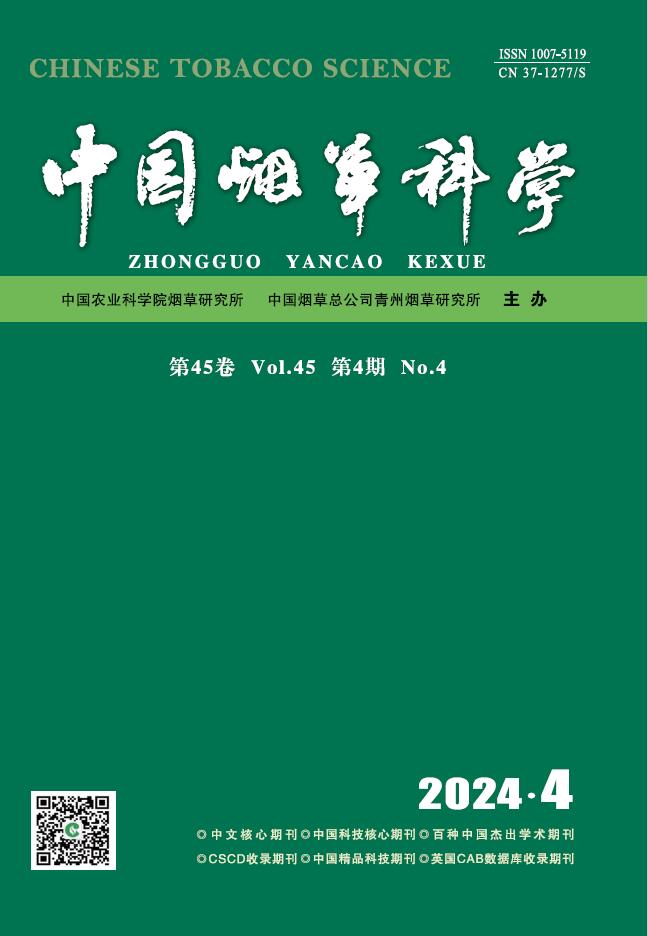EFFICACY OF AZOXYSTROBIN FUNGICIDE AGAINST SORE SHIN OF SHADE TOBACCO CAUSED BY RHIZOCTONIA SOLANI
引用次数: 10
Abstract
Azoxystrobin fungicide was evaluated for efficacy against Rhizoctonia solani, causal agent of tobacco sore shin, in greenhouse and in vitro tests. Azoxystrobin significantly increased root weights and reduced disease ratings compared with untreated controls in 2004 and 2005, and also reduced the percent of the stem girdled in 2005 (not measured in 2004). Some phytotoxicity (observed as flecks) was visible on 1 or 2 leaves of Quadris-treated transplants about 1 week after treatment. Leaves that expanded after treatment did not show symptoms. Activity of azoxystrobin fungicide in vitro was not as effective as might be expected from field observations and greenhouse experiments. Dose– response experiments of R. solani mycelial growth rate on azoxystrobin-amended half-strength Potato dextrose agar measured mycelial growth inhibition of only 30% by 1,000 mg/ ml ai. Salicylhydroxamic acid (SHAM), used to inhibit the alternative oxidase pathway in a number of fungi, was tested at 100 mg/ml SHAM in media to determine the efficacy of azoxystrobin against 2 isolates of R. solani in the absence of the alternative oxidase pathway. In the presence of SHAM, the inhibition of mycelial growth was over the LD50 for all concentrations tested, indicating that R. solani does use an alternative oxidation pathway in vitro. However, the observed inhibition decreased over time; inhibition averaged over all azoxystrobin concentrations was 63.3% after the first 24 hr, 52.0% after 48 hr and only 26.5% during the third–fourth day of exposure (P 5 0.001). It appears that an additional mechanism of alternative oxidation may become active over time in R. solani. Azoxystrobin (Quadris) is registered for management of tobacco blue mold and should be valuable as a transplant band treatment to protect shade-grown tobacco plants from sore shin caused by R. solani. Additional key words: alternative oxidase pathway, Nicotiana tabacum, Quadris, sore shin氮唑菌酯杀菌剂对茄枯丝核菌所致阴烟胫痛的防治效果
采用温室试验和体外试验评价了氮唑菌酯杀菌剂对烟草溃疡病原菌索拉尼根核菌的防治效果。在2004年和2005年,与未经处理的对照相比,氮唑菌酯显著增加了根重,降低了病害等级,并且在2005年还降低了茎环的百分比(2004年未测量)。处理后1周左右,在1或2片叶片上可见一些植物毒性(以斑点的形式观察)。治疗后扩大的叶子没有表现出症状。偶氮菌酯杀菌剂的体外活性不如田间观察和温室试验所预期的那样有效。剂量效应实验表明,1000 mg/ ml ai对茄茄菌菌丝生长的抑制率仅为30%。水杨酸羟肟酸(saliicylhydroxamic acid, SHAM)是一种抑制多种真菌中选择性氧化酶途径的药物,我们在培养基中以100 mg/ml的SHAM浓度测试了偶氮霉酯酶(azoxystrobin)对2株无选择性氧化酶途径病原菌的抑制作用。在SHAM存在的情况下,对菌丝生长的抑制在所有测试浓度下都超过LD50,这表明番茄红霉在体外确实使用了另一种氧化途径。然而,观察到的抑制作用随着时间的推移而减弱;所有氮嘧菌酯浓度的平均抑制作用在24小时后为63.3%,48小时后为52.0%,在暴露的第3 - 4天仅为26.5% (P < 0.05)。随着时间的推移,一种额外的替代氧化机制可能变得活跃。Azoxystrobin (Quadris)已注册用于烟草蓝霉病的管理,作为一种移植带处理应该是有价值的,以保护遮荫种植的烟草植物免受茄蓝霉病引起的胫痛。附加关键词:替代氧化酶途径,烟草,Quadris,胫骨痛
本文章由计算机程序翻译,如有差异,请以英文原文为准。
求助全文
约1分钟内获得全文
求助全文
来源期刊

中国烟草科学
烟草
自引率
0.00%
发文量
3722
期刊介绍:
Chinese Tobacco Science is an academic scientific journal (bimonthly) under the supervision of the Ministry of Agriculture and Rural Affairs of the People's Republic of China, and sponsored by the Tobacco Research Institute of the Chinese Academy of Agricultural Sciences and the Qingzhou Tobacco Research Institute of China National Tobacco Corporation. It was founded in 1979 and is publicly distributed nationwide. The journal mainly publishes academic papers on scientific research results, new production technologies, and modern management in my country's tobacco science research and tobacco production technology. In addition, it also publishes forward-looking review articles in the field of tobacco research. There are columns such as tobacco genetics and breeding, cultivation technology, modulation and processing, physiology and biochemistry, plant protection, review or monograph, quality chemistry, etc.
 求助内容:
求助内容: 应助结果提醒方式:
应助结果提醒方式:


